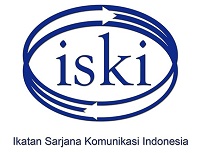Pengaruh Karakteristik Teknologi dan Karakteristik Pekerjaan terhadap Penerapan “Collaboration Technology Internet Content Filter”
Abstract
Keywords
Full Text:
PDF (Bahasa Indonesia)References
Adams, D.A., Nelson, R.R., and Todd, P. A. 1992 “Perceived usefulness, ease of use, and usage of information technology: A replication,” MIS Quarterly, 16 (2). pp. 227-247.
Agarwal, Ritu and Karahanna, E. 2000. “Time Flies When You’re Having Fun: Cognitive Absorption and Beliefs About Information Technology Usage,” MIS Quarterly, 24 (4): 665-694.
BPS. 2005. “Kota Bandar Lampung dalam Angka 2004/2005.” Bandar Lampung; BPS dan Bappeda Kota Bandar Lampung.
Davis, F. D. 1989. “Perceived Usefulness, Perceived Ease of Use, and User Acceptance of Information Technology,” MIS Quarterly, 13
(3). pp. 319-339.
Davis, F. D., Bagozzi, R. P., and Warshaw, P. R. 1989, “User Acceptance of Computer Technology: A Comparison of Two Theoretical Models,” Management Science, 35 (8). pp. 982-1002.
Dennis, A.R., and Garfield, M.J. 2003. “The Adoption and Use of GSS in Project Teams: Toward More Participative Processes and Outcomes,” MIS Quarterly, 27 (2), June. pp. 289-323.
Dennis, A.R., George, J.F., Jessup, L.M., Nunamaker, J.F., and Vogel, D.R.1988. “Information Technology to Support Electronic Meetings,” MIS Quarterly, 12 (4). pp. 591-624.
Dennis, A.R., Kinney, S.T., and Hung, Y. C. 1999. “Gender Differences in the Effects of Media Richness,” Small Group Research, 30 (4). 405-
Dennis, A.R., and Reinicke, B. 2004 “Beta Versus VHS and the Acceptance of Electronic Brainstorming Technology,” MIS Quarterly (in
press).
Dennis, A.R., Wixom, B.J., and Vandenberg, R.J. 2001. “Understanding Fit and Appropriation Effects in Group Support Systems via Meta-Analysis,” MIS Quarterly, 25 (2). pp. 167-197.
DeSanctis, G., and Gallupe, R.B. 1987. “A Foundation for the Study of Group Decision Support Systems,” Management Science, 33 (5). pp.
-609.
DeSanctis, G., and Poole, M.S. 1994. “Capturing the Complexity in Advanced Technology Use: Adaptive Structuration Theory,” Organization
Science, 5 (2). pp. 121-147.
Eden, C., and Ackerman, F. 2001. “Group Decision and Negotiation in Strategy Making,” Group Decision and Negotiation, 10 (2). pp. 119-140.
Fulk, J., and Boyd, B. 1991. “Emerging Theories of Communication in Organizations,” Journal of Management, 17 (2). pp. 407-446.
Fulk, J., Steinfield, C., Schmitz, J., and Power, J. 1987. “A Social Information Processing Model of Media Use in Organizations,” Communication Research, 14 (5). pp. 529 552.
Gattiker U. E., and Kelley, H. 1999. “Morality and Computers: Attitudes and Differences in Moral Judgments,” Information Systems Research,
(3): 233-254.
Gujarati, Damodar 1991 Basic Econometrics. Second Edition, McGraw Hill International Editors, Singapore.
Ho, Susanna S.Y. et al., 2003. “Acceptance of Internet Content filters: An Empirical Study,” International Journal of Information Technology & Decision Making, 2 (3): 477-496.
Dhanik Sulistyarini dan Baroroh Lestari. Pengaruh Karakteristik Teknologi dan Karakteristik... 181
Hu, P.J., Chau, P.Y.K., Sheng, O.R.L., and Tam, K.Y. 1999. “Examining the Technology Acceptance Model Using Physician Acceptance of Telemedicine Technology,” Journal of Management Information Systems, 16 (2). pp. 91- 112.
Huber, G. 1983. “Cognitive Style as a Basis for MIS and DSS Designs: Much Ado About Nothing?” Management Science, 29 (5). pp. 567-579.
Laudon, Kenneth C., and Laudon, Jane P. 2004. Management Information Systems: Managing the Digital Firm. Eight Edition. New Jersey:
Pearson Education, Inc.
Malhotra, N. K., 1999. Marketing Research. 2 rd Ed. New Jersey: Prentoce–Hall Inc.
Maseleno, Andino, 2003. Kamus Istilah Komputer dan Informatika. Yogyakarta: Ilmu Komputer.com.
McGrath, J.E. 1984. Groups: Interaction and Performance. Prentice Hall, Englewood, NJ.
McGrath, J.E. 1991. “Time, Interaction, and Performance (TIP): A Theory of Groups,” Small Group Research, 22 (2). pp. 147-174.
Moore, G. C. and Benbasat, I. 1991. “Development of an Instrument to Measure the Perceptions of Adopting an Information Technology Innovation,” Information Systems Research, 2 (3): 199-222.
Nunamaker, J.F., Jr., Dennis, A.R., Valacich, J.S., Vogel, D.R., and George, J.F. 1991. “Electronic Meeting Systems to Support Group Work,” Communications of the ACM, 34 (7). pp. 40-61.
Nunberg, G.. 2001. “The Internet Filter Force, The American Prospect,” 12 (1). Oetomo, Budi Sutedjo Dharma. 2002. e-Education: Konsep, Teknologi dan Aplikasi Internet Pendidikan. Yogyakarta : ANDI.
Olson, G.M., and Olson, J.R. 1991 “User-Centered Design of Collaboration Technology,” Journal of Organizational Computing and Electronic Commerce, 1 (1). pp. 61-83.
Orlikowski, W. 2000 “Using Technology and Constituting Structures: A Practice Lens for Studying Technology in Organizations,” Organization
Science, 11 (4). pp. 404-428.
Reinsch, N.L., and Beswick, R. 1990. “Voice Mail Versus Conventional Channels: A Cost Minimization Analysis of Individuals’ Preferences,”
Academy of Management Journal, 33 (4). pp. 801–816.
Rice, R.E.1987. “Computer-Mediated Communications and Organizational Innovation,” Journal of Communication, 37 (4). pp. 65–94.
Rice, R.E., and Shook, D. 1990. “Relationships of Job Categories and Organizational Levels to Use of Communication Channels, Including
Electronic Mail: A Meta-analysis and Extension,” Journal of Management Studies, 27 (2). pp. 195-229.
Schmitz, J., and Fulk, J. 1991. “Organizational Colleagues, Information Richness, and Electronic Mail: A Test of the Social Influence Model of
Technology Use,” Communication Research, 18 (4). pp. 487 523.
Short, J., Williams, E., and Christie, B. 1976, The Social Psychology of Telecommunications. John Wiley, London.
Sproull, L., and Kiesler, S. 1986. “Reducing Social Context Cues: Electronic Mail in Organizational Communication,” Management Science, 32 (11). pp. 1492-1512.
Straub, D.W., and Karahanna, E. 1998. “Knowledge Worker Communications and Recipient Availability” Toward a Task Closure Explanation of Media Choice,” Organizational Science, 9 (2). pp. 160-175.
Straub, D., Limayem, M., and Karahanna, E. 1995. “Measuring System Usage: Implications for IS Theory Testing,” Management Science,
(8). pp. 1328-1342.
Taylor, S., and Todd, P.A. 1995. “Understanding Information Technology Usage: A Test of Competing Models,” Information Systems Research, 6 (4). pp. 144-176.
Venkatesh, V. 2000. “Determinants of Perceived Ease of Use: Integrating Perceived Behavioral Control, Computer Anxiety and Enjoyment into the Technology Acceptance Model,” Information Systems Research, 11 (4). pp. 342-365.
Venkatesh, V., and Davis, F.D. 1996. “A Model of the Antecedents of Perceived Ease of Use: Development and Test,” Decision Sciences,
(3), pp. 451-481.
Venkatesh, V., and Davis, F.D. 2000. “A Theoretical Extension of the Technology Acceptance Model: Four Longitudinal Field Studies,”
Management Science, 45 (2). pp. 186-204.
Venkatesh, V., and Morris, M.G. 2000. “Why Don’t Men Ever Stop to Ask For Directions? Gender, Social Influence, and Their Role in Technology
Acceptance and Usage Behavior,” MIS Quarterly, 24 (1). pp. 115-139.
Venkatesh, V., Morris, M.G., Davis, G.B., and Davis, F.D. 2003. “User Acceptance of Information Technology: Toward A Unified View,” MIS
Quarterly, 27 (3), September. pp. 425-478.
Wahana Komputer Semarang dan Penerbit ANDI Yogyakarta, 2002. Kamus Lengkap Dunia Komputer. Yogyakarta: ANDI Offset.
DOI: https://doi.org/10.29313/mediator.v6i2.1186
Refbacks
- There are currently no refbacks.

This work is licensed under a Creative Commons Attribution 4.0 International License























